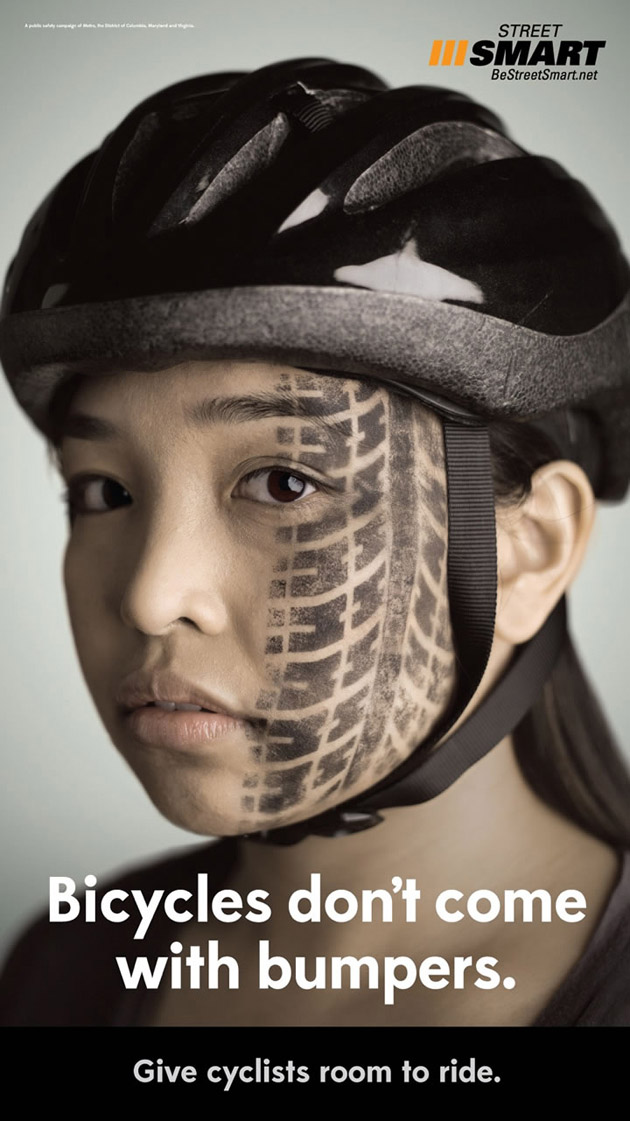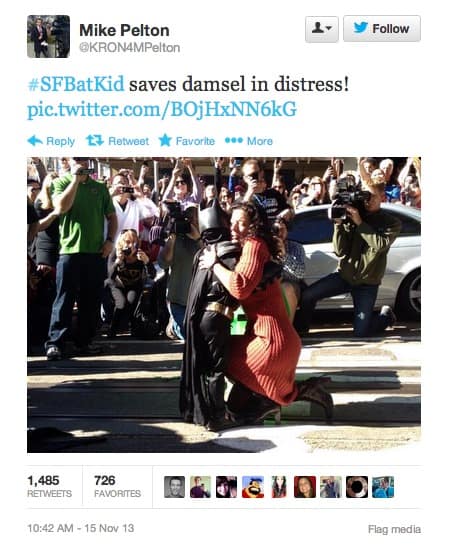Nonprofits often engage in a form of advertising too, known as advocacy advertising. If you’re not privy to advocacy advertising, it’s our goal to make you.
In this article, we’ll explain this form of advertising in full and expound on its benefits. Then, we’ll share some of the most poignant and profound advocacy advertising examples to inspire your next campaign!
Table of Contents
What Is Advocacy Advertising?
Advocacy advertising is a marketing campaign that advocates for a cause, usually a noble cause. Indirectly, it can also help a brand sell.
Often, nonprofits are the drivers behind these advertising campaigns, although not exclusively. Private companies also utilize advocacy marketing strategies, because people care more about causes than products.
So, what’s the difference between a traditional advertising campaign versus an advocacy campaign? That’s simple!
A commercial brand or company that’s paying for advertising – be it a big billboard on a busy four-lane highway or an Internet ad–is trying to attract more buyers to its products and services.
An advocacy advertisement is not about products or services. Rather, it’s about fueling interest and engagement around a particular topic.
These topics or concepts are often catered toward the public good. For instance, an advocacy ad about train or bike safety benefits no one but the person who sees the ad and rides public transportation.
The ad never sells a bike or a train; it tries to protect public welfare, which is much nobler. Advocacy advertising is technically a form of advocacy marketing, but advocacy marketing is somewhat different.
Let’s go over the differences: With advocacy marketing, marketers will take the best experiences from customers or users and then rely on those as the basis of the campaign. There can be more promotional aspects to advocacy marketing that never exist in advocacy advertising.
Who Indulges in Advocacy Advertising?
Advocacy advertising generally occurs at different levels and involves many different groups that bring about changes in various ways.
In a broad sense, the advocacy ad campaign is aimed at higher-level government officials, policymakers, or the general public, whose influence can have an impact and bring about a positive change to the cause.
Non-Profits or NGOs
Interest groups that participate in activities that raise awareness for a cause or for social messages use advocacy campaigns to support their claims.
For example, these could include groups that could promote a campaign against animal cruelty (such as PETA). They could create an ad portraying the impact of how human activities affect animals, such as in dairy farming.
Through a strong advocacy ad campaign, they could educate the public on the reality of dairy farming and how it adversely affects the animals involved.
This type of advertising does not promote the non-profit but the cause, and hence, they are key focus groups in advocacy advertising.
Lobbyists and public interest groups
Lobbyists and public interest groups are focused on political issues, mostly involving political campaigns to influence voters.
A good example of a lobbyist advocacy campaign would be a billboard on a social issue, which indirectly caters to the agenda of a political leader (manifesto) or a prevalent public issue.
These advocacy groups aim to influence the public’s feelings and emphasize the importance of backing an issue.
Social activists
Social activists are one of the most sought-after advocacy groups that run ad campaigns to support their cause. They are different from NGOs in that they seek to spread awareness for a social cause involving real-world public issues on a larger scale.
For instance, a magazine ad by a social advocacy group on climate change is a good example of how advocacy advertising can be used to highlight very real issues of the world.

Although this would not immediately result in a response, it is more about spreading awareness among the public on a key issue and acting together.
Other interest groups
Advocacy advertising focus groups are not just non-profit organizations and political campaigners. Any interest group with probable cause and a need to raise awareness instead of promoting themselves is known as an advocacy advertiser.
These could also include small and large corporations campaigning against an issue, an individual with an issue at hand, and other interest groups.
Now that we have covered the different interest groups in advocacy campaigning, let us now see what are the different types of advocacy advertising.
The Difference Between Issue Advertising and Express Advertising
Regarding advocacy advertising, unlike commercial advertising, there are two different ways of communicating and getting the message across.
Let us now see what they are and how they contract each other.
Issue Advertising
Issue advertising, also known as issue advocacy, is advocacy advertising mainly involved in raising awareness of a particular issue. The purpose of issue advertising is not to act against the issue but to spread awareness amongst the general public.
For instance, a prevalent political issue may be advertised without asking the public to vote for it or against it. This type of advocacy advertising especially applies to NGOs that aim to spread awareness and are not involved in influencing the public to act.
By law, NGOs are restricted from participating in political agendas and activities.
To ensure they stay on safe pages, NGOs use issue advertising to highlight an issue, spread awareness, and ensure the ad does not encourage in any way to take a political stand or take action.
Here is an example of issue advertising on saving paper by WWF:

Express advocacy advertising
In disparity with issue advertising, express advocacy advertising influences to take action and is often involved in a political standpoint. Express advocacy mostly involves political campaigns that voice their opinion for or against a political issue or leader, aiming to influence the voters’ decision.
To identify an expressing advocacy campaign, look for the following keywords:
- Vote for
- Support
- Defeat
- Reject
- Vote against
If an advertisement has one or more of the keywords, emphasizing the support of a political view, it is an express advocacy. Advertisements that evidently favor a side or support a political candidate with the intention of influencing the public to make a decision are express advocacy advertisements.
Here is an example of an express advocacy advertising for a political campaign:

What Is the Collective Aim of Advocacy Advertising?
The main intent of advocacy advertising is raising awareness of an issue or a cause and influencing the public to take action toward the matter at hand. To create awareness for an issue, there is a need to draw attention to it.
Once you have the attention of the masses, the issue will gain traction, and you will have support for the cause from the public, which will aid in taking action towards the cause.
That is exactly what advocacy advertising hopes to accomplish. The main spheres of advocacy advertising include issues pertaining to:
- Political matters
- Socio-economic issues
- Social issues
- Philanthropic Initiatives
Advocacy advertising is multi-faceted, and some of these levels have categorical regulations depending upon the issue or the group proposing the ad.
However, due to the vast number of issues and causes you can campaign for, there is an equal number of need for advocacy advertising. Hence, it is an opportunistic field.
The Benefits of Advocacy Advertising
If a nonprofit or private group is not going to earn a direct profit by selling a product or service, then why engage in advocacy advertising, to begin with? After all, they’re not going to make back the money they put into the advertising campaign either.
While that’s true, to these parties, it’s not about the money. Here are the motivations behind advocacy ads.
Raise awareness
As much as you might try to be knowledgeable about the world around you, you can’t possibly fathom every issue and cause out there. There aren’t enough hours in the day.
An advertisement can be a great way for a nonprofit to raise awareness about a cause that might have otherwise eluded you in your day-to-day life.
If you become aware of a new cause or issue through the advertisement, the ad has done its job, and the campaign is successful.
Generate exposure
It can be hard for nonprofits to gain exposure in the same way a for-profit business can. The lack of commercial elements can reduce how much interest someone has in a nonprofit’s message.
An advertisement that’s hard to ignore, such as a billboard, a social media ad, or an Internet ad, will give the nonprofit or private group the exposure they’ve been so desperately seeking.
You’ll recall that this exposure is not for them, but rather, for their cause or message. That goes back to our point from before. The more people who are privy to that cause of message, the better!
Save money
We established that a private group or nonprofit engaging in advocacy advertising does not recoup the money they spend on a campaign. That doesn’t mean they don’t save money.
Advertising comes in all sorts of forms. Some are a lot more expensive than others, such as radio and television, yet they don’t have the reach that they did decades prior.
Thus, by embracing some forms of advertising more so than others, a nonprofit or private company can still get the word out about its message or cause but not have to spend a large sum to do it. It’s a win-win.
Read also: 10 Epic Banner Ad Examples: Stupendously Creative!
Advocacy Advertising Examples That Really Made The News
Now, let’s look at some of the most shocking and controversial advocacy ad campaigns of recent years. Some of these were run by nonprofits, while others were created by international brands selling profitable products.
1. Street Smart Ad About Cyclists

Now here’s a head-turning ad!
This ad about motorist safety for bicyclists sharing a road with them proclaims that “bicycles don’t come with bumpers.” What stands out a lot more than the headline is the image of a helmeted woman cyclist with black tire treads along her face.
This ad displays the grisly reality of what can happen when drivers don’t want to share the road.
2. Dawn’s Save Wildlife Ad
Warning: The following content contains images/videos that some readers may find disturbing. Reader discretion is advised.
Dawn’s been helping out our feathered and finned friends for over 40 years with their ‘Dawn Saves Wildlife’ campaign.
The world knows them for their dish soap. However, they’re also big on protecting aquatic wildlife. They’ve cleaned up a whopping 150,000 marine birds and mammals in North America.
Moreover, Dawn is also donating to International Bird Rescue & The Marine Mammal Center, cutting down on water use, recycling, and going sustainable. The organization is targeting to protect a million birds and marine mammals and turning regular folks into Wildlife Heroes.
Read also: 10 Remarkable Display Ad Examples and Why They Work
3. APAV Ad About Domestic Abuse

This is another chilling example that proves how strong and effective advocacy advertising can be.
This ad for domestic abuse support shows a battered woman looking straight at the camera with her finger over her lips, a classic hush gesture. It would certainly grab your attention if you saw it!
4. NNECA Ad About Violence Against Women and Children

NNECA helps protect children and women from sexual abuse. In a series of ads much like this one, a person is shown looking at the camera without a mouth.
The point of this advocacy campaign was to show that victims of sexual abuse rarely feel like they have anyone to talk to. It drives that point home very well.
5. Manforce Condom’s ‘Love Can Take A Wrong Turn’ (#shutthephoneup)

Now, let’s switch gears to Manforce Condoms and their “Shut The Phone Up” campaign. They’re sounding the alarm on filming private moments on phones.
Manforce presented this story about a couple on their honeymoon, where the husband loses his phone. It’s a real jaw-dropper. It’s backed by a startling statistic from the India Today Sex Survey.
Turns out, one in every five couples in India have filmed their intimate moments, and that can lead to all sorts of trouble. This is hence a great example of advocacy advertising.
6. Generations Against Bullying Ad About Speaking Up
Generations Against Bullying (GAB) is a non-profit organization that has taken a unique approach to combat bullying by empowering children.
The basis of the campaign is to transform bystanders into “Upstanders.” By getting involved in a non-threatening way, bullying can be stopped in less than 10 seconds 85% of the time.
This advocacy campaign helps students understand the immense power they have to stop bullying.
7. Liking isn’t helping. Be a volunteer … (CRS)
“Liking isn’t helping” is another heart-wrenching advocacy ad campaign example. It was created by Publicis Singapore for Crisis Relief, a Christian disaster relief organization run by volunteers.
The campaign uses shocking real press images representing catastrophes like floods, wars, and earthquakes, combined with thumbs-ups mimicking the Facebook “Like” button.
The campaign’s tagline, “Be a volunteer. Change a life“, calls for real action and involvement.
The idea behind this campaign is bold and straightforward – It emphasizes that social media engagement won’t stop poverty, homelessness, or other social problems caused by wars and natural disasters.
8. Tailgating Isn’t Worth It
The “Tailgating Isn’t Worth It” was a collaboration between Amélie and the Colorado State Patrol to increase awareness of aggressive driving behavior around large commercial vehicles.
The objective was to cut down on collisions and deaths involving automobiles and trucks. They found that about 3,500 deaths and 100,000 injuries take place just due to risky driving behavior which involves semi-trucks and autos.
As a solution, they crafted an advocacy campaign that targeted a typical mid-twenties male commuter who considers himself a good driver but is actually a menace.
The campaign used a straight-talk approach and created a graphic, bold, and memorable campaign without scare tactics. The show-stealer was a larger-than-life, spectacular 3D billboard displaying the disastrous consequences of tailgating semi-trucks.
9. WWF Ad About Exotic Animal Souvenirs
The World Wide Fund for Nature (WWF) launched a compelling advocacy advertisement campaign with the message “Don’t buy exotic animal souvenirs“.
The advertisement’s bold visuals say it all — and quickly became controversial. The goal of the campaign was to educate the public about the problems associated with the sale and use of exotic animal products, such as those found in souvenir shops.
Most people don’t realize they’re contributing to wildlife trafficking and extinction by buying exotic animal products. This advocacy campaign urged consumers to be more sensitive and stay away from buying products that exploit or harm animals.
Advocacy Advertising vs Advocacy Marketing
Advocacy advertising, often known as issue advertising, is done with the goal of changing viewers’ minds on a particular social issue. Public health or controversial themes are great examples.
In advocacy advertising, nonprofit organizations and commercial advertisers often go after voters with campaigns for environmental protection and human rights.
On the other side, advocacy marketing is the use of advocates for a brand, product, or service. Here’s a simple chart to clarify the difference between advocacy advertising and advocacy marketing.
|
Aspect |
Advocacy Advertising |
Advocacy Marketing |
| Purpose | Promote a social issue, public health, or controversial topic | Promote a product or service through brand advocacy |
| Target Audience | Voters, general public, advocacy groups | Existing satisfied customers, potential customers |
| Methods | Television ads, print ads, social media campaigns, express advocacy | Paid ads, events, reviews, endorsements, organic social media posts |
| Measurement of Success | Public opinion and awareness of the nonprofit organization or cause | Increased customer loyalty, more positive reviews, sales growth or improved lead generation |
What Are the Different Advocacy Advertising Channels?
Before we get into the different advocacy advertising channels, it is important to understand how they differ from commercial advertising.
In commercial advertising, a product, brand, or service needs to be advertised. In advocacy advertising, it is not the product or band but an issue, cause, or general interest that must be advertised to the public.
In advocacy advertising, much more than traditional advertising, there is a lot of persuasion directly involved. This character can be understood as the core of advocacy advertising.
Technology today has made the world more connected and this helps advocacy advertising reach a larger audience without splurging on too much time and resources. More effort is required to run a successful advocacy ad campaign than commercial advertising to use the internet and resources to scale your efforts.
Like any form of marketing, it is important to do adequate market research, weigh in the pros and cons and costs, and then proceed with the marketing efforts.
Similar to commercial advertising, different channels are available for advocacy advertising. Each has its perks and downs, and it is important to analyze which channel would be most appropriate for your campaign cause.
Here are some of the most prominent advertising channels.
Online advertising
The internet is gold for advertising. Online advertising offers diverse advantages, especially for advocacy groups, because of the unlimited scope and tools available. Due to the wide reach, it helps to use the internet to run banner ads, pay-per-click (PPC) ads, email campaigns, and build websites for advocacy campaigns.
Using tools to track and analyze, these ads can be targeted to specific geographic or demographic groups, conversion rates can be tracked, which will help scale the campaign quickly.
Similarly, social media is a great channel to create massive reach overnight.
Television and radio
Television and Radio are the OG channels of advocacy advertising. Although quite effective in getting the message across, they should be used with a combination of online channels to ensure wider reach.
They can be used to diversify your advocacy campaign to reach all demographics. Strong visuals with a good background story and crisp content will help to get your message across effectively.
As television advertisement is all about timing, it is important to keep the ad short and also to aim it in a time slot where most of your target audience would tune in.
Radio advertising is great for targeting a specific audience. As different radio stations have different types of programs that are run catering to different demographics of people, they can be used to target a specific audience pool.
An advantage of radio advertising for advocacy campaigns is that it requires a lesser budget and effort as it involves a crisp audio message to get the issue across.
Print media
Printing advocacy campaigns in newspapers or magazines is also another way to diversify your campaign. Similar to TV and radio advertising, you can target a specific audience, particularly those who regularly read publications.
Since there is a wide range of print media with different types of deliverables, you can target a particular issue pertaining to a focused demographic.
For instance, say your issue involves children and parents, you can target your advocacy ads on parenting magazines to have a better reach.

Even though print ads are a great way to target a specific audience, they can be quite expensive and require you to modify and change your ads regularly.
Now that we have covered all the different channels you can use to run your advocacy advertisements, it is up to you to decide which ones work the best for your cause.
Advocacy Advertising Best Practices (With Examples)
Here are some tips and examples for advocacy advertising by channel type.
Social media advocacy best practices
Due to the vastness of social media and its influence on a wider audience, it is important to time and schedule your posts or banner ads, depending on your target audience.
Keeping the content visually stimulating is important to capture the audience’s attention and highlight your cause. Consistency is also key to highlighting your cause frequently and staying on top of people’s minds.
Social media advocacy advertising example
The popular NGO, Make-A-Wish Foundation ran a social media campaign for a young kid, Miles Scott.
The hashtag #batkid became viral and reached 1.89 million social media users. This campaign also managed to reach record-breaking donations for Miles.

Email advocacy campaign best practices
With email advertising, it is important to have a clear-cut subject line and well-worded content in the email itself. Much similar to social media posts, the timing is key with emails, too.
Analyzing the best times to send emails to special contacts will be more beneficial for your advocacy campaigns than randomly sending emails.
Email advertising example
Here is a fine example of advocacy advertising done through email by Gasp.

Gasp is a non-profit health advocacy group, based in Alabama. The email is simple, has a clear message, and is formatted in such a way that the main points are highlighted for the reader.
Search and display ads best practices
It is important to keep the message brief for advocacy campaigns in search ads due to the character limits the ad platforms impose. Another important tip is to test your content to understand which copy gets the maximum engagement.
For display and banner ads, image size and quality are important. Keep the images of the highest quality (of course, keeping the crash limit in mind) and stick to the most common size format.
Example of advocacy ad in search channel
Here is an example of a search ad by Doctors Without Borders.

The copy conveys exactly what it needs to convey with many data-backed facts that emphasize their cause. This is exactly how a search ad should be displayed in order to influence the reader.
Website advocacy campaign best practices
A website is the crux of the digital advocacy campaign. Much like commercial advertising, a website should have the right blueprint for the campaign to be successful.
This includes engaging and appropriate CTAs, striking but simple graphics, and content that speaks volumes and conveys the right message.
Website advocacy advertising example
Here is an example of how 350.org, an NGO campaigning against climate change, used its website homepage to encourage visitors to support their cause in different ways.

You can see how the NGO placed the CTA for donations right at the top, with a few options preselected, making it easy and quick for people to donate.
Conclusion
Advocacy advertising pushes a message, with or without the intention of promoting products or services. Primarily, the goal is to increase awareness and understanding of a cause — for the safety and betterment of society.
If you have a business that could use some advocacy advertising, waste no time and start immediately. You won’t know what works until you try a few campaigns.
If you need help with your marketing automation, try the world’s most affordable all-in-one marketing software: EngageBay.






You make a strong case for advocacy advertising by highlighting its ability to build brand loyalty and differentiate businesses in an increasingly competitive marketplace. By aligning themselves with causes that resonate with their target audience, companies can create a unique brand identity that goes beyond mere product features. This not only helps in attracting new customers but also in retaining existing ones, as consumers are more likely to stay loyal to a brand that stands for something they believe in.
For more marketing ideas and strategies, I would highly recommend visiting our website – https://www.biteblueprint.com
This insightful article on advocacy advertising highlights the significant impact it has on brand perception and customer loyalty. The engaging content and examples effectively demonstrate the power of aligning brands with social causes. The emphasis on authenticity and sincerity in advocacy campaigns is a crucial takeaway for any marketer. Kudos to EngageBay for shedding light on this influential aspect of advertising!
This article provides valuable insights into the power of advocacy advertising in today’s digital landscape. By leveraging authentic customer experiences and testimonials, businesses can build trust and credibility with their audience, ultimately driving brand loyalty and long-term success. EngageBay’s comprehensive guide offers actionable strategies to harness the potential of advocacy advertising effectively.